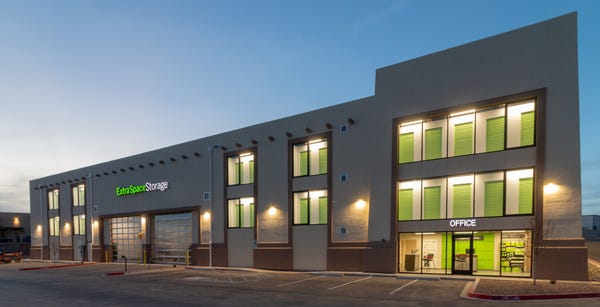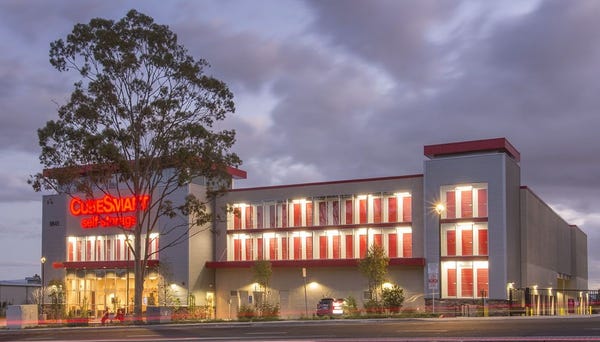With large land parcels in short supply for self-storage development, a multi-story approach to design can offer a winning alternative. Let’s examine some concepts to consider when assessing a site with limited buildable area.
Today’s aggressive real estate market includes an explosion of urban growth largely fueled by multi-family development. Great news for self-storage, right? Well, yes and no.
While population density is on the rise, competition for urban properties is also on the upswing. The few available parcels in the urban landscape that are zoned appropriately for self-storage often present challenges, making these typically expensive properties difficult to pencil. The solution, as one might imagine, is to go vertical with a multi-story application that achieves the desire square footage.
Self-storage developers have traditionally sought cheap, industrial-zoned properties that allow for a sprawling, single-story design. But today, cost-effective land for such projects is increasingly difficult to find. Depending on the jurisdiction, usable land area can be reduced drastically due to setback, landscaping and parking requirements. Additional challenges include utility connections, stormwater management, street dedications and environmental issues, among others. Any issue that impacts usable area also affects facility layout.
While most self-storage developers might pass on these opportunities due to perceived limitations, a second look with a fresh mindset can yield an exceptionally well-performing asset. Let’s examine some general concepts that should to consider when assessing a site with limited buildable area.
Why Multi-Story?
When faced with limited buildable area, developers have little choice but to consider a vertical application to achieve a financially viable project. While construction and operation costs will be higher than those of a traditional, single-story facility, the attainable square footage helps offset some expenses.
Another advantage is floor area ratio (FAR). Though some jurisdictions have FAR maximums, many don’t count basements in their calculations. This can open an opportunity to make up square footage below grade that’s being lost to parking, loading, circulation, etc., at ground level. Just keep in mind that in addition to increased construction costs, basements produce a large amount of exports, and there are some inherent unknowns when excavating a site. Pay close attention to soil/groundwater conditions.
There are also instances in which a multi-story approach is appropriate even on a large property. In areas where competition is low and barriers to entry are high, the trend is to build bigger facilities to stake a claim on the market and extend lease-up times. In these scenarios, it’s common to combine a multi-story structure with single-story buildings to help screen the loading/unloading area and provide additional drive-up units. This combination can be a great success.

Extra Space Storage in Santa Fe, N.M.
A Ramped Solution
Many developers get discouraged by land that isn’t rectangular and flat; but these opportunities shouldn’t be overlooked. If a site has excessive topography, you may be able to build a multi-story facility with drive-up unit access on different levels by incorporating ramps. This approach gives you the freedom to relieve some of the exported soil from the site while benefitting from the natural insulation that occurs when a floor is partially below grade in a retaining condition.
Depending on the topography, it may be possible to build a ramp-served, two-story facility that eliminates the need for elevators. A building that allows drive-up loading and unloading on multiple levels can be advantageous compared to an elevator-served facility that needs to discount rates for units on the upper floors.
In this type of facility, buildings are typically laid out in long, rectangular shapes. The short side can usually accommodate a ramp with a 10 percent grade to access the other end of the building. Using a 10-foot ceiling height, the width of the building can expand or contract, depending on the contours of the site. This design effectively creates a two-story building that functions as a single-story on each level. Though this approach may not be suitable in every situation, when it works, it provides single-story functionality with rental rates to match!
Additional Considerations
With self-storage development booming, suppliers of building components are sometimes strained to meet demand. Elevators are one product being impacted, and timely delivery and installation can be a challenge. Most general contractors are aware of this issue and strive to adjust their schedules accordingly.
Another aspect of multi-story design to consider is the placement and design of the tenant loading/unloading area. This can be difficult since most multi-level facilities have large footprints, and the end goal is to minimize the number of elevators to lower costs and maintenance issues, among other reasons.
Depending on the climate and the municipality’s loading-space requirements, consider providing a covered area. Not only does it create a warm, inviting atmosphere and protect customers from the elements, it allows you to place elevators near the center of the structure, which is vital when trying to minimize travel distance to units. While preferences for door-to-door travel distance vary, we recommend you not exceed 160 feet.

CubeSmart in San Diego
No Longer a Last Resort
Not long ago, developers looked at multi-story self-storage as a last resort, with the drawbacks far outweighing the benefits. While a traditional, single-story facility will always be a staple, changing consumer expectations have opened the doors for new product types. The multi-story approach has increased in popularity and introduced viable solutions for sites with minimal buildable area.
Today’s market is a land grab for developers, with several players vying for limited property in hot areas. Ultimately, the property dictates design. Multi-story facilities give designers and developers another tool to produce a successful product.
Bruce Jordan, president of Jordan Architects Inc., has more than 30 years of experience in architecture, preceded by an extensive background in construction and real estate development. His experience includes self-storage, professional office buildings, high-density residential projects, mixed-use projects, retail facilities, hotels, restaurants, industrial, commercial, and specialty projects such as museums and theme parks. For more information, call 949.388.8090; visit www.jordanarchitects.com.
David Meineke is vice president of Jordan Architects. He has more than 14 years of experience in self-storage design and development. He’s a member of the national Self Storage Association’s Young Leadership Group. He holds a bachelor’s degree from the University of San Diego and is an associate member of the American Institute of Architects. For more information, call 949.388.8090; visit www.jordanarchitects.com.
About the Author(s)
You May Also Like





